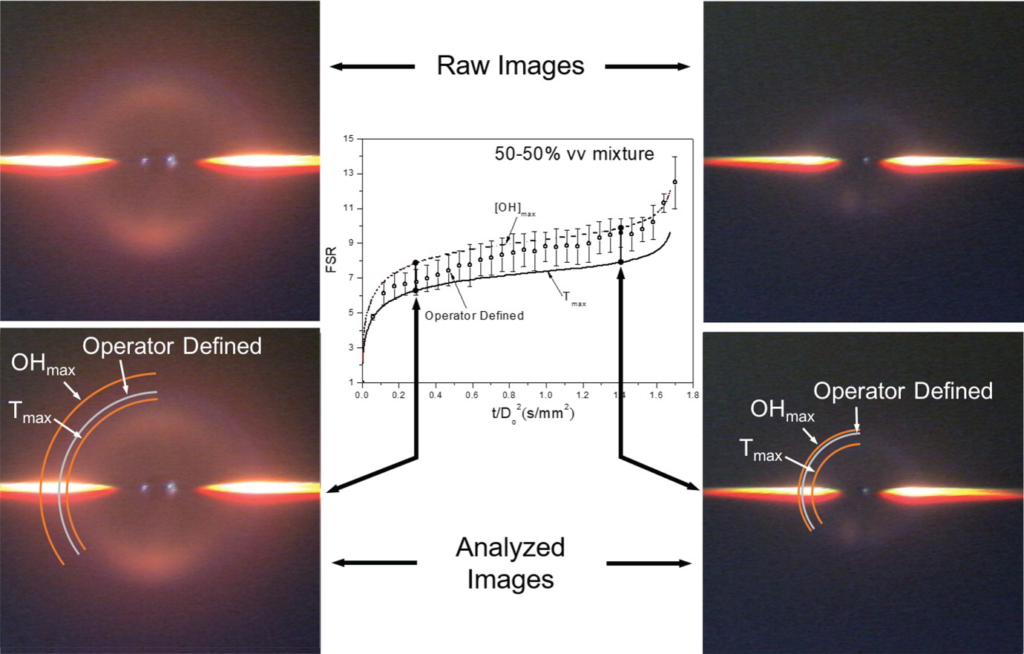OpenSMOKE++ was used for simulating the evaporation and combustion of isolated fuel droplets. The work is a collaboration between the CRECK Modeling Lab, Cornell University, University of San Diego California and NASA Glenn Research Center. The main results have been published on Combustion Theory and Modelling in a paper with title: “The role of composition in the combustion of n-heptane/iso-butanol mixtures: experiments and detailed modelling”.

A. Dalili, J.D. Brunson, S. Guo, M. Turello, F. Pizzetti, L. Badiali, C. T. Avedisian ,K. Seshadri, A. Cuoci, F.A. Williams, A. Frassoldati, M.C. Hicks, The role of composition in the combustion of n-heptane/iso-butanol mixtures: experiments and detailed modelling, (2020), Combustion Theory and Modelling, DOI: 10.1080/13647830.2020.1800823
Abstract
Experimental data and detailed numerical modelling are presented on the burning characteristics of a model gasoline/biofuel mixture consisting of n-heptane and iso-butanol. A droplet burning in an environment that minimises the influence of buoyant and forced convective flows in the standard atmosphere is used to promote one-dimensional gas transport to facilitate numerical modelling of the droplet burning process. The numerical model includes a detailed combustion kinetic mechanism, unsteady gas and liquid transport, multicomponent diffusion inside the droplet, variable properties, and non-luminous radiative heat transfer from the flame. The numerical simulation was validated by experimental measurements in the standard atmosphere which showed good agreement with the evolutions of droplet and flame diameters. The iso-butanol concentration had a strong effect on formation of particulates. Above ~20% (volume) iso-butanol, flame luminosity was significantly diminished anddecreased with increasing iso-butanol concentration, while CO2 emissions as a representative greenhouse gas were not strongly influenced by the iso-butanol loading. The soot shell was located near a 1350 K isotherm for concentrations up to 20% (volume) iso-butanol, suggesting this value as a possible soot inception temperature for the mixture droplet. The combustion rate decreased with increasing iso-butanol concentration which was attributed to iso-butanol’s higher liquid density. No evidence of a low temperature burning regime, or of extinction, was found (in experiments and simulations) for the small droplet sizes investigated.





